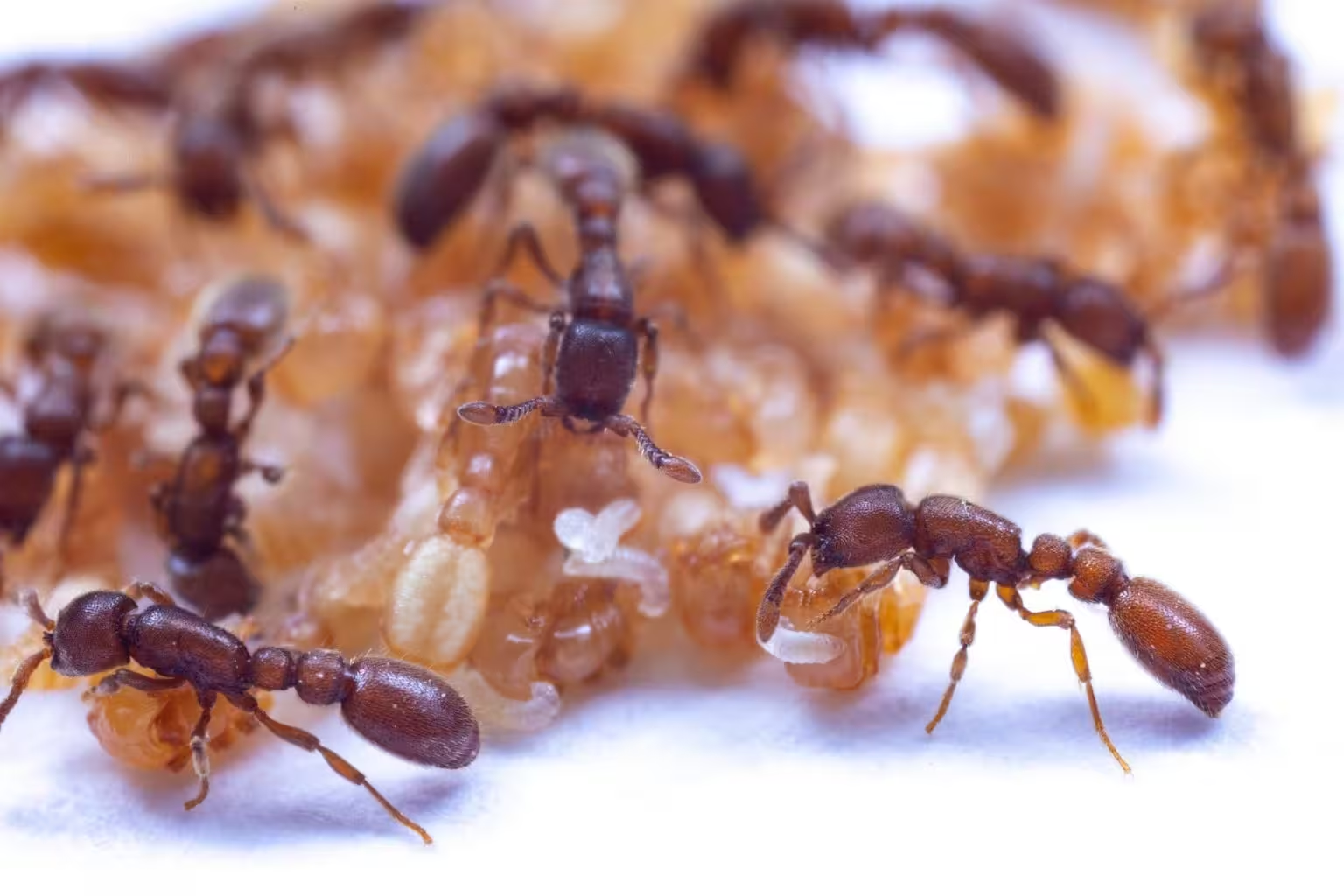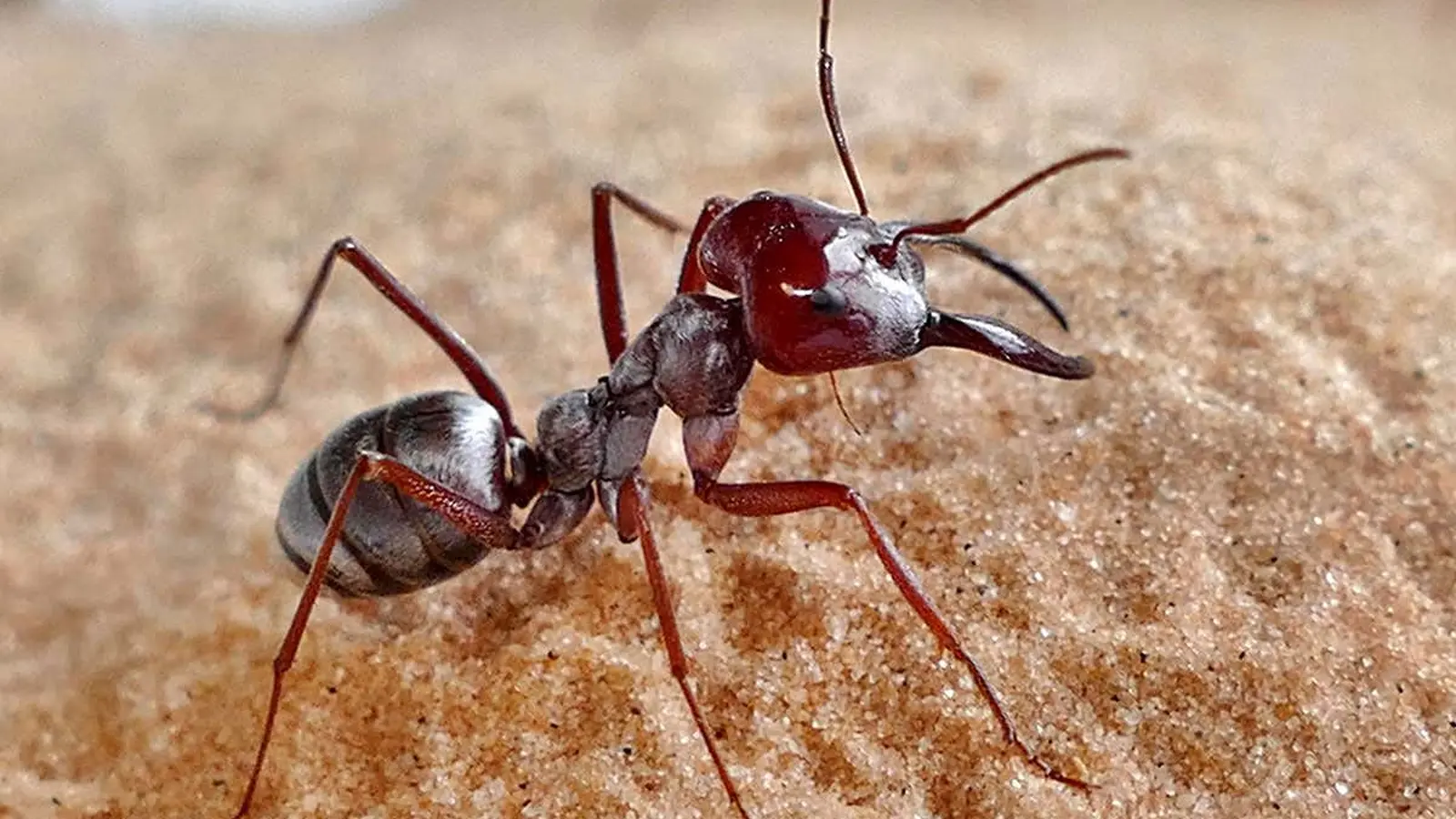6 Minutes
How ants keep their scent world unambiguous
Ants depend on a highly refined sense of smell to navigate complex social lives. Pheromones guide foraging, alarm signaling, nestmate recognition and many other colony behaviors. That precision rests on a foundational rule of olfactory neuroscience: each sensory neuron typically expresses a single odorant receptor gene. This one-receptor-per-neuron rule prevents overlapping signals and preserves the clarity of the chemical messages ants rely on.
But ants present a genetic challenge. Where fruit flies carry roughly 60 odor receptor genes, many ant species have several hundred. Those genes are often tightly clustered in the genome and share high sequence similarity. Activating just one receptor in such crowded neighborhoods is not a trivial matter: turning on the wrong neighbors would blur the chemical code. New work on the clonal raider ant reveals an elegant molecular strategy ants use to maintain one receptor per neuron despite a dense receptor repertoire.
Discovery: transcriptional interference protects a single receptor
Researchers led by Daniel Kronauer at Rockefeller University have shown that ant neurons use a two-way transcriptional shield to mark a chosen receptor as active while silencing its neighbors. Published in Current Biology, the study combines gene expression mapping, RNA sequencing and RNA fluorescence in situ hybridization to show how a single receptor is protected within a cluster of nearly identical genes.
When an ant olfactory neuron commits to one receptor gene, RNA polymerase II—the enzyme that copies DNA into RNA—does more than transcribe the targeted gene. It frequently continues past the normal termination site, producing 'readthrough' transcripts that extend into downstream receptor genes. Those extended RNAs remain trapped in the nucleus, apparently because they lack the molecular tags needed for export. Although likely nonfunctional as messenger RNA, their very presence suppresses downstream genes.
Simultaneously, the neuron generates antisense transcripts—RNA molecules transcribed in the opposite direction—which interfere with transcription of upstream receptor genes. Together, readthrough transcription downstream and antisense transcription upstream create a protective envelope around the selected receptor. The mechanism, described by the team as transcriptional interference, prevents neighboring genes from initiating full, functional transcription and thereby enforces the one-receptor identity of the neuron.

Methods and key evidence
To capture these events, the Kronauer lab dissected antennal tissue from clonal raider ants and profiled gene expression at high resolution. RNA sequencing revealed which receptor genes were active in individual neurons. RNA fluorescence in situ hybridization (RNA FISH) then localized these transcripts within the antenna and cellular nuclei.
The researchers observed readthrough transcripts spanning multiple adjacent receptor genes and detected antisense RNAs oriented opposite to neighboring genes. Computational analysis and molecular perturbations supported a model in which transcriptional readthrough and antisense transcription act as roadblocks, preventing productive transcription of surrounding receptor genes.
Graduate student Giacomo Glotzer summarized the significance: 'Each sensory neuron has a distinct molecular identity because it commits to a single receptor. Our results show ants use a transcriptional strategy that is different from what we see in flies or mammals.' Parviz Daniel Hejazi Pastor, a biomedical fellow in the lab, added: 'We found that preventing full transcription of nearby receptors is sufficient to give the neuron a single receptor identity.'
Context: how insects and mammals compare
Different animals have evolved different solutions to the same problem. In Drosophila (fruit flies), precise regulatory switches selectively activate single receptor genes. Mammals employ stochastic mechanisms in which chromatin rearrangements eventually leave one receptor gene active. Ants, with far larger receptor families and dense gene clusters, appear to use transcriptional interference as a practical solution that scales to hundreds of receptors without needing bespoke regulatory elements for each new gene.
This strategy may help explain how ant receptor repertoires can expand rapidly over evolutionary time. New duplicate genes can be incorporated into an existing system where the readthrough/antisense safeguards prevent accidental co-activation, allowing repertoire growth without breaking neuronal identity.
Broader implications and evolutionary reach
The team confirmed the same mechanism in other social insects, including the Indian jumping ant and the honeybee, suggesting that transcriptional interference may be widespread among insects with large odorant receptor families. If broadly distributed, this mechanism reshapes how we think about gene family regulation: tight clusters of related genes can be controlled by directional transcriptional processes rather than by elaborate, gene-specific regulatory sequences.
Beyond basic insect olfaction, the findings have broader genomic and biotechnological implications. Transcriptional interference could be exploited in synthetic biology to regulate tightly clustered gene arrays, or to design circuits that require strong local silencing around chosen loci. For sensory neuroscience, the work provides a new example of how cellular identity can be enforced by transcriptional dynamics rather than solely by chromatin marks or transcription factors.
Related technologies and future directions
Technologies that made this discovery possible include single-tissue RNA sequencing, high-resolution RNA FISH, and computational modeling of transcriptional readthrough. Future work will test how general the mechanism is across insect orders and whether other sensory systems use analogous transcriptional shields. Researchers will also probe the molecular determinants of nuclear retention for readthrough transcripts and the biochemical basis for antisense-mediated roadblocks.
Expert Insight
Dr. Maya Thompson, a neurogeneticist at the Institute for Integrative Biology, commented: 'This study is an elegant demonstration of how transcription itself can be an active architectural force in the genome. By turning transcription into both a signal and a silencer, ants achieve functional specificity in a genomic context that would otherwise be noisy. The implications for understanding rapid sensory evolution and for designing gene regulation strategies are substantial.'
Conclusion
The clonal raider ant study reveals a robust, scalable genetic strategy for maintaining one receptor per neuron: transcriptional interference via readthrough and antisense transcription. This two-way transcriptional shield enforces neuronal identity in genomes crowded with similar receptor genes and may be a common solution across insects. The discovery deepens our understanding of sensory system evolution and suggests new avenues for applied genomics and synthetic regulation of complex gene families.
Source: scitechdaily


Leave a Comment